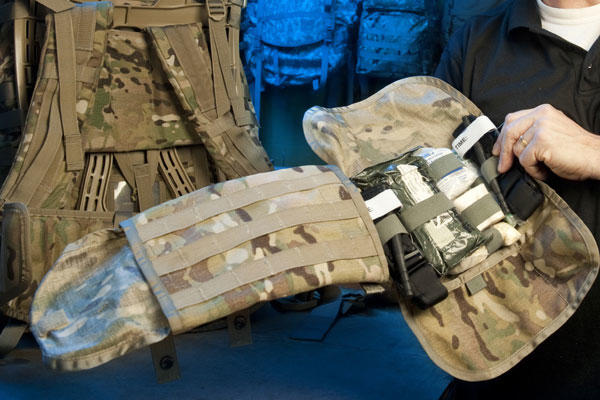Eye shields to help safeguard a wounded soldier's vision are now part of all Army first aid kits issued to troops deploying to the combat theater from Fort Bragg, N.C.
But the director of education, training, simulation and readiness for the Defense Department's Vision Center of Excellence said countless soldiers will remain at risk during "the slow roll-out."
Dr. Robert Mazzoli, an ophthalmologist and retired Army colonel, said the Defense Department "should buy [the eye shields] and then hand them out like cards" to all troops in theater.
The VCE has been advocating for eye shields in all individual first aid kits, or IFAKs, Defense Department-wide, since 2010. The shields are carried by medics and corpsmen, but not by all Marines and soldiers, though the Defense Department said they would be standard in all service IFAKs by the end of 2012.
The Marine Corps is currently looking at modifications to its IFAK, while the Defense Medical Material Program Office is working on a Joint-Service First Aid Kit, or JFAK, that would be adopted DoD-wide.
Maj. Peter Stambersky, assistant product manager of soldier clothing and individual equipment at the Program Executive Office Soldier at Fort Belvoir, Va., said the Army's new IFAK2 – the one now being issued to deploying troops – could be a contender for an all-services kit. He said everything the Army has in its IFAK2 already has been accepted by the JFAK Committee, and PEO Soldier representatives are sharing the kit with the Marine Corps, as well, to see if it is interested in it.
"What we have now versus what we had before is an additional tourniquet, an additional chest seal, a strap cutter and an eye shield," Stambersky said. "So I think what we have, from the Army's standpoint, is probably the best first aid kit out there when it comes to saving soldiers on the battle field."
Even the kit itself has been redesigned. Rather than a bulky kit a soldier would wear on his hip, the IFAK2 is slim enough to be worn at the small of the back, even fitting under large or medium Modular Lightweight Load-carrying Equipment, or MOLLE. It also can be pulled out from either direction, Stambersky said, so if you can't get at it with one hand you can get it with the other.
"Right now they're being issued out through [a rapid fielding initiative]," he said. "The first units to get them are at Fort Bragg, and we're issuing them out every month to soldiers that are deploying."
Mazzoli said he was happy that the Army is already fielding its IFAK2, something he had not expected to happen until the first quarter of 2014.
But the military is still far behind where it should be by now in having the shields at the point of injury, he said.
The Army issued a message in 2008 stressing the importance of using the shield to keep damaged eyes from further injury. What he Army has found since then is that even when the shields are available overall compliance in using them was just 39 percent, with just 4 percent of troops having them placed correctly – that is, without gauze placed between the eye and the shield, he said.
"Reasons for the low compliance are varied," Mazzoli said. "Clearly education plays a heavy role, but I believe immediate availability of the shield (or lack of) continues to contribute."
Neither Mazzoli nor officials at PEO Soldier are able to say why the eye shields have not been shipped in bulk to the theater for distribution through the units to each soldier. Military.com was referred by the Army to the Defense Logistics Agency for comment, but the DLA has not responded.

























